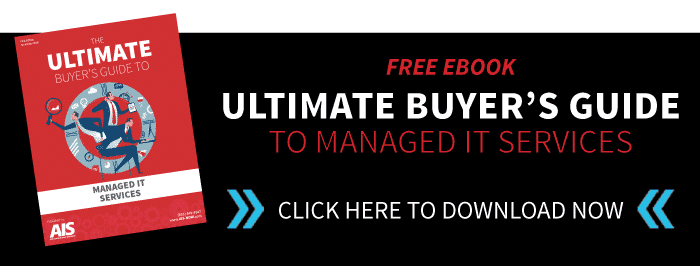Content Marketing: 6 Steps to Blogs That Rank (pt. 1 of 3) [SERIES]
June 28th, 2019 | 10 min. read

There is an endless amount of information on the internet discussing blog content posts, ebooks, articles, and resources on how to write the best content to achieve top rankings over your competition.
When we assess our success of high content rankings, and the learning experience we’ve had over the last 18 months, our results of ranking 25 times more keywords on page one of Google has brought in 10 times the amount of traffic to our company website. How did we do this?
"We developed content using a solid content marketing strategy."
Seems simple to get these amazing results, right?
How about if we also told you our content outranks several billion-dollar brands (some even household names) in our industry, too? Does that make this information a little more valuable and give it some street cred?
To be honest with you, our rankings even surprised us, especially since we have marketing experts, including myself, practicing different content strategies for over 20 years at our company.
Have you ever heard the phrase, “Content is King”? The first time I heard it was from Bill Gates many years ago in 1996, so surely, this isn’t a new concept. This quote raises the question that you and many others also might be thinking, “Has the ‘Content Ship’ left the dock?” Our answer to this is, “Absolutely not, but quality content is now king!”
We’re proof that just about any business can develop content that ranks as long as they follow a consistent and robust content strategy. Follow along as we explain the six steps to make sure your content ranks, no matter what industry or size your business is.
Content Marketing Strategy and Purpose: The “Why…”
Before we jump right into our content ranking methods and strategies, take a look a few facts to get a better understanding of why we develop content. Whether you’re a business decision maker or retail consumer, let’s face it we all go online for almost every buying decision?
Did you know…
- 70% of the decision-making process is already determined before a buyer even gets to you?
- 94% of all Google search traffic comes from the first page of results?
- 95% of search traffic drops on the second page of results?
- 6% of all Google traffic goes to paid search (Adwords)?
Keeping these statistics in mind, we all need to position ourselves for powerful brand awareness top and center in Google search if we want to get noticed, build trust, and drive traffic. To do so, you should first set three main goals:
1. Get On Page One: “If you ain’t first your last,” the very words from Will Ferrell's character in Talladega Nights: The Ballad of Ricky Bobby. It’s very simple. Get to the first page of Google because nothing else counts. It’s great to have a goal like position one (that’s where 33% of the clicks go) or position 0 (the Google Snippet and how to rank for it) on the first page, but let’s be realistic.Not everyone can be in position one or even on page one, while also continually holding that position.
2. Write a Great Meta Description: If you aren’t going to be in position, but you're on page one, then make sure you’re focusing heavily a great meta description, and one that’s better than the other nine results on the page.What’s a great meta description? Well, what would it take to provide you just enough information to leave you wanting for more? See if you can tell the difference by reading these meta descriptions for “Top Copiers” on Google SERP (Search Engine Results Page).
There’s no guarantee that your meta description will be used, but if you keep it short, it will probably be applied to describe your content.
3. Relevant Content on Your Page: Now that you’re on the first page of Google and you’ve enticed the online user to click on your link, it’s imperative the information on the page they're headed to has the content you told them is going to be there. If not, the user will bounce (leave immediately).
6 Steps to Content that Ranks
Now that you’ve set your goals it’s time to follow some basic rules or guidelines that supports content rankings. Here’s how we do it:
1. Strategy
If you aren’t sure where to get started, take the weekend and read an excellent book published by Marcus Sheridan, “They Ask, You Answer.” I read it in 8 hours, and I am both ADHD and Dyslexic, and I was taking notes as I read, so that should tell you something!
Marcus’ basic and “no-nonsense” strategy describes how the consumer has changed (such as going online for answers) and how we need to develop content answering all of their questions— even the difficult ones. Makes sense, right?
Marcus may not have known this when he started writing blog posts back in 2009, but this strategy is even more relevant today with how we interact with voice search.
“Hey Alexa, what’s the best grocery store nearest me?” By asking, Alexa, Siri, and Google questions, long tail searches (in the natural form of a question) are quickly becoming the standard.
2. Website
No matter what, it’s critical your business has a good website, and one that is Search Engine Optimization (SEO) friendly and sound. Your website is the foundation that you’ll host all of your great content, so you need to make sure it is properly coded and easily “crawled” by the search engines.
If you’re not sure if your site has good SEO structure, use a tool like SEMrush’s SEO Toolkit to perform an audit of your site. If this is too much, then make sure that you have the basics down and run a Google PageSpeed Insights Test.
It’s also necessary to make sure your site is mobile friendly. Today, if your site isn’t considered “mobile-friendly,” then you should stop reading this post right now and get to work on your website!
3. Blog
What many businesses don’t know is the importance of having a place for your blogs on your website that should be set up as a subdomain or a subdirectory (i.e., blog.domain.com or domain.com/blog). This section on your site is where you’ll be posting all of your written blog posts about answering consumer questions.
There are some basic guidelines that you’re going to need to follow, such as creating posts around “The Big 5.” These are described in Marcus’ book, and we’ve gone into more detail about specific kinds of content tactics in our article, Content Marketing Tactics For Blogs.
However, for a quick summary of tactics, consider these:
- Certain word length for each post
- Keyword research
- Consistent posting (If you start this process, you need to continue posting content regularly)
- Proper use and formatting of headers (H1, H2, H3 tags)
- Internal and external links
- Backlinks
4. Tools
This section is truly one we could (and will) write an entire article about. Take a look at some of the basics you’ll need for content success, growth, and consistency.
Analytics: You’ll do yourself a disservice if you don’t utilize tools to monitor and measure your progress. Identify some fundamental Key Performance Indicators (KPIs), such as:- Website traffic volume
- Keyword rankings
- Number of keywords in Google SERP (page one, top 3 positions, number on page two, number of overall keywords Google is tracking)
- How long visitors stay on your site after they get there
There are many different tools to track these metrics, but you’ll benefit the most from a basic site tools like Google Analytics. Additionally, you may want to use other SEO tracking tools, such as SEMrush or Moz for SEO, and HubSpot or Marketo for nurturing visitor traffic into eventually becoming paying customers.
Keyword Research: When you are beginning to build content, you’ll want to make sure you’re targeting the right keywords. One keyword or phrase may have more volume than another, and they also have different difficulty for you to rank.For example, a word like “Copier” may have an estimated 8,100 people searching for that word monthly and a difficulty to rank for it of 76 (scale from 1-100). Any term or phrase with a KD (keyword difficulty) score below 70 is an opportunity for ranking content.
As soon as you add another word to the search phrase such as, “Office Copier” the monthly volume decreases to 880 searches, and the KD reduces to 61.
You can find an example of one of our office copier blogs by reading, How to Choose the Best Office Copier For Your Business.
Although you may not attract a larger volume of traffic, this could be a better opportunity for you, since it’s a more defined term, resulting in a more targeted customer profile.
For example, adding one word like “Office” removes all other traffic for words like “DVD Copiers,” or, “Software Copiers,” that aren’t part of your target audience. As you probably know, building an audience is one of the most important content marketing efforts you can make.
Content Development: Some fundamental writing tools are also one of the best ways to make sure your content ranks. When we say writing tools, we’re not just talking about a spell checker or document software. You’ll need to go further.
For example, we use an add-on to Google Docs called the SEO Writing Assistant through SEMRush. By the way, Google Docs is a great tool we use for creating, editing, and collaborating with electronic documents.
The SEO Writing Assistant allows us to input some of our guidelines, (such as keywords, word length, and difficulty) but then keeps us on track while we write our content so that we can make sure it is technically correct.
The rest is up to you to make sure your blog is entertaining while also including other features, such as Call to Actions (CTAs) or a bio of the author. Don’t forget to make sure you have a reliable grammar checker to use before making any article live on your site.
5. Tactics and Teams
Developing content is best when created inside your organization. Of course, not every small or medium sized business has the marketing resources for this—and there are third-party companies that provide these services.
Remember, you are the best source for information about your company, products, and services. If you’re expecting someone outside your business to be as good as you— you're dreaming.
Again, if you’re interested in learning more in-depth ways on some of the best tactics to help with blog content, read our article, Content Marketing Tactics For Blogs.
6. Video
When creating a content strategy, it’s critical you don’t limit yourself to just thinking about the written word. Video is just as important. How come? Here are some notable facts about video content you may not already know.
- By 2022, 82% of all Internet traffic will be video based (15 times higher than in 2017).
- YouTube is the second largest search engine. Ahead of Amazon and Facebook.
- Video increases SEO value.
- Video increases customer engagement on your website.
- Video can be used throughout your entire sales process; from the initial sales call, the follow-up, to the proposal delivery and close of the sale.
Just think, the consumption of content has gone full circle. Thinking back to traditional marketing years ago, it was television because that was the delivery mechanism for entertaining and informative content. Now, it’s the Internet. The content or material hasn’t changed, just the delivery mechanism. The same thing goes for the radio.
If you’re going to have a solid content strategy, you should be creating both written and video content. Both written and video content are equally important since both are becoming more similarly viewed by all audiences.
Video is such an imperative piece of your content strategy that we will also write a future post about, similar to this one as far as tools, tactics, and strategy.
The Last Word
One of the other things you may want to make sure you don’t fall for are businesses or online services that guarantee they can get you on the first page of Google. Of course, many of them can, but that may be for the name of your company, your brand, in your local market, which won’t produce any buyers.
Much of that traffic is already looking for your company name or your location. What you need to do is provide high-quality content that answers customer’s real questions and establishes you as an authority to build trust with decision makers while they are considering a future purchase.
If you do this well with good quality content, you will be rewarded by Google and sought after by future customers.
Keep a lookout for our future posts that cover even more strategies and guidelines on successful and prosperous types of content marketing practices. You owe it to yourself and your company to understand that there’s a lot more out there when developing a winning content marketing strategy to boost your results.
At AIS, we’re here to help you, your employees, and your business succeed. If you ever want to have a conversation about your business goals or marketing strategies, or if you’re curious about other products and services we offer, reach out to us as here, as we’re always ready to learn, listen, and give you peace of mind to help you win more business. Also, make sure you visit our video channel on YouTube, The Copier Channel.
Over the last 20+ years, Keven has had a passion in all areas of traditional and digital marketing. His main focus is how the consumer or decision makers see brands in order to develop successful programs to meet them on their turf. Prior to AIS, Keven has held senior marketing and communication posts in Financial Services, Technology, Communications, Biotech, and Lead Generation industries from start-ups to privately held and public companies. Today, he’s building a team to support the growth of AIS to become a leading brand in office technology. When not working, Keven can be found hacking his house, life, and those around him to make everything around him a better world. He volunteers his time as a Board Member for United States Diving and Ad Fontes Media.
Topics:




